
The American Institute of Architects has unveiled the winners of the 2023 Architecture Awards. According to the AIA, the annual series “celebrates the best contemporary architecture and highlights the many ways buildings and spaces can improve lives.”
Sixteen projects were honored for the 2023 edition, identified by a seven-person jury as submissions that “demonstrate design achievement, including a sense of place, purpose, history, and environmental sustainability.”
This year’s winners range from a high-rise commercial building in San Francisco to a low-rise school in India’s Thar Desert. The only firm this year to achieve more than one award was LMN for their ferry terminal in Mukilteo and their Seattle Academy of Arts and Sciences.
The full list of winners is as follows:
633 Folsom, San Francisco, CA
Gensler

Excerpt: “The Swig Company, 633 Folsom’s owner, sought a new design that focused on the well-being of its occupants and access to daylight, critical components of future occupancy. Building performance and aesthetics also needed to support the surrounding neighborhood’s increasingly pedestrian qualities. In the end, the project resonated with the leadership of Asana, a popular work management platform, which leased the entire building for its headquarters.”
Center of Developing Entrepreneurs, Charlottesville, VA
Wolf Ackerman, EskewDumezRipple

Excerpt: “A new anchor for Charlottesville’s historic Main Street, the Center of Developing Entrepreneurs is a mixed-use development envisioned by a University of Virginia graduate seeking to give back to the community. The building offers the city a new public plaza and a place for locally grown information technology and clean energy innovations to blossom into new businesses rather than relocate outside the region.”
GoSpotCheck Headquarters, Denver, CO
Tryba Architects

Excerpt: “Transforming a previously underutilized corner in Denver’s Lower Downtown neighborhood, the new headquarters for GoSpotCheck, an analytics and business intelligence company, remedies a critical gap in the city’s streetscape. The project is a 16,000-square-foot expansion of the historic Rocky Mountain Seed Building, which replaces a drab surface parking lot and contributes to the richness and walkability of Denver’s downtown community.”
John W. Olver Design Building, University of Massachusetts Amherst, Amherst, MA
Leers Weinzapfel Associates

Excerpt: “The Olver Design Building, a new collaborative facility at University of Massachusetts, Amherst, unites three design departments from different schools under one roof. In doing so, the building fosters new synergy across the disciplines of architecture, building and construction technology, and landscape architecture on the university’s flagship western Massachusetts campus.”
Lubber Run Community Center, Arlington, VA
VMDO Architects
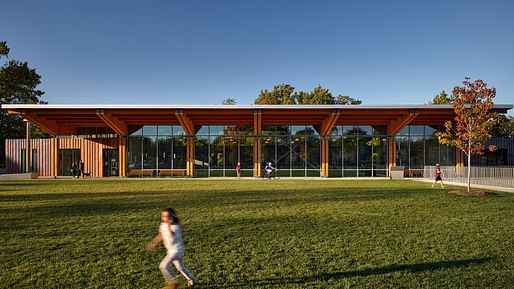
Excerpt: “In Arlington, Virginia, this new community center replaces an aged facility in Lubber Run Park, a natural resource that is precious to urban Arlington County. Connecting to nature and preserving the open space were the project’s drivers, shaping a 50,000-square-foot facility that offers a wealth of programming for all ages.”
Marlboro Music Reich Hall, Marlboro, VT
HGA

Excerpt: “Inspired by the humble Cape Cod cottage, the new Jerome and Celia Bertin Reich Rehearsal Building and Music Library offers the celebrated Marlboro Music program upgraded practice facilities for its musicians. Driven by the overarching desire to best serve today’s musicians and music itself, the hall’s design stays true to the spirit of Southern Vermont, where the program is held each summer, while providing much-needed modern rehearsal spaces, a music library, and staff offices.”
Marygrove Early Education Center, Detroit, MI
Marlon Blackwell Architects
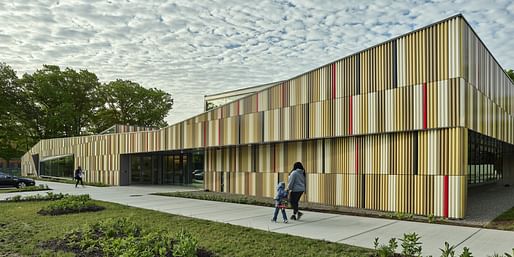
Excerpt: “A beacon of education and a vibrant reminder of the ongoing efforts to revitalize Detroit, the Marygrove Early Education Center is a state-of-the-art facility serving children up to age 5 from surrounding neighborhoods. The center sits on Marygrove College’s campus in the city’s Livernois-McNichols District, the first new building on campus in decades. With its low-slung form and colorful exterior, it reflects the area’s newfound optimism and a pervasive spirit of new life and recovery.”
Minneapolis Public Service Building, MN
Henning Larsen, MSR Design
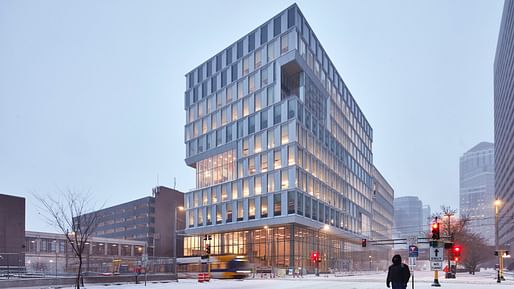
Excerpt: “Standing in stark contrast to the stately yet opaque granite buildings of Minneapolis’ Government District, the city’s new Public Service Building proposes a contemporary alternative to civic design. Developed through a close partnership with the city and other public advocates, the building’s openness demonstrates how public spaces can better reflect the communities they serve.”
Mukilteo Multimodal Ferry Terminal, Mukilteo, WA
LMN Architects

Excerpt: “This ferry terminal north of Seattle, Washington’s first in nearly 40 years, transcends its function as a critical piece of transit infrastructure, demonstrating the ways careful placemaking, engagement, and environmental awareness can reshape civic architecture. It incorporates the cultural influence of the Pacific Northwest’s Native peoples and includes sustainable elements that advance the state’s commitment to stewardship that parallels the Native ethos to 'live light on the earth.'”
The Rajkumari Ratnavati Girl's School, Rajasthan, India
Diana Kellogg Architects
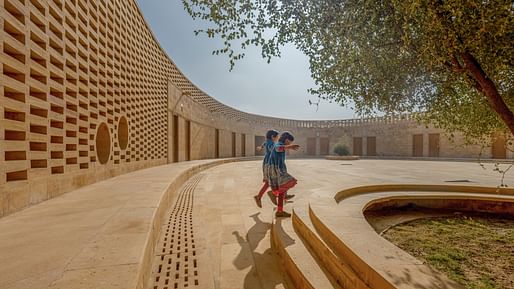
Excerpt: “An architectural marvel sitting atop the sprawling sands of India’s mystic Thar Desert, the Rajkumari Ratnavati Girl’s School serves nearly 400 young women in a region where female literacy is just 36%. The school is the first important building in a complex known as the Gyaan Center, which will also include a performance and exhibition space and a cooperative where artisans will teach the students’ mothers and other women the region’s weaving and embroidery techniques. The cornerstone of the complex, the school aims to equip young women with tools to advance their education while simultaneously raising awareness around the issues women face in India.”
The Rockefeller University Stavros Niarchos Foundation - David Rockefeller River Campus, New York, NY
Rafael Viñoly Architects
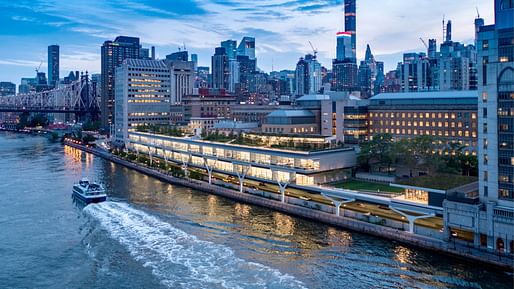
Excerpt: “Since 1901, The Rockefeller University has focused on biomedical research, and its faculty has garnered nearly 30 Nobel Prizes, five Breakthrough Prizes, and four MacArthur Fellowships. This $440 million campus extension hovers over FDR Drive along Manhattan’s East River, enhancing the campus landscape and providing flexible laboratory space that promotes heightened interactions among researchers in support of science.”
Seattle Academy of Arts and Sciences Middle School, Seattle, WA
LMN Architects
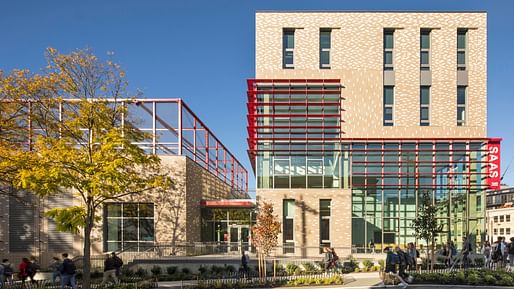
Excerpt: “An evolution of the Seattle Academy of Arts and Sciences’ urban campus, this new middle school harnesses verticality to leverage a limited site and connect the academy more deeply to the surrounding community. Sitting at a busy Seattle intersection, the six-story academic volume offers students a supportive learning environment that encourages independence, experimentation, and a new dialogue between the school’s curriculum and the Capitol Hill neighborhood.”
TIDE Academy, Menlo Park, CA
LPA Design Studios
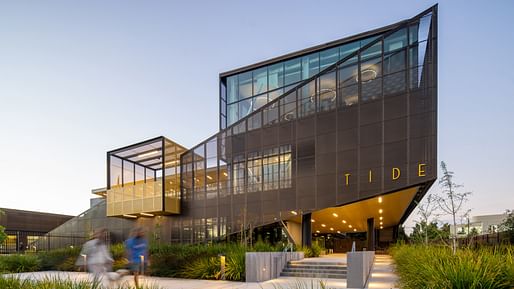
Excerpt: “From its location in Silicon Valley, the new STEAM-focused TIDE Academy signals its focus on enterprise and invention. The school, filled with flexible and diverse learning spaces inspired by the innovative tech companies surrounding it, serves 400 students as they engage in interdisciplinary and inquiry-based study. By leveraging existing community assets, the school can nimbly extend its learning systems beyond its classroom walls, offering greater access to the school and promoting new partnerships.”
UCLA Pritzker Hall Modernization, Los Angeles, CA
CO Architects
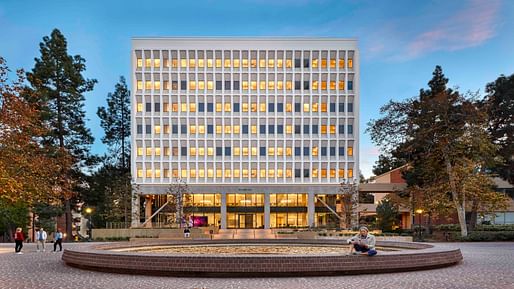
Excerpt: “This modernization of an iconic UCLA building originally designed by Paul Revere Williams, FAIA, in 1967 greatly extends the life of a midcentury classic while shaping dynamic learning spaces for the university’s psychology department. The project also honors the important legacy of Williams, who as the first African American to become a licensed architect west of the Mississippi River helped define Los Angeles’ architectural vernacular despite the adversity of the time.”
University of Washington, Life Sciences Building, Seattle, WA
Perkins&Will
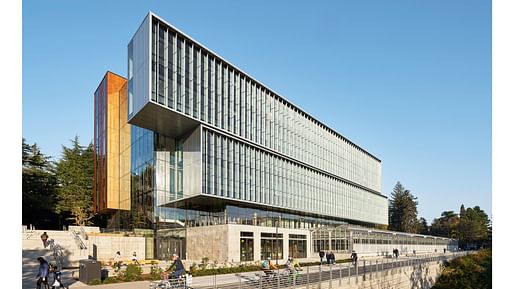
Excerpt: “The Life Sciences Building (LSB) simulates an 'ecotone'—the transition region between two biological communities. In both program and design, the technology behind LSB’s science and research intersects with the study of the natural world. At 207,000 square feet, LSB combines energy-efficient technologies with natural materials found in the Pacific Northwest, bringing the outside inward and placing education on display. To enhance the building’s relationship to the campus, students, faculty, and environment, LSB embraces three core concepts—science as a gateway, connections, and engagement.”
Worcester Blackstone Visitor Center, Worcester, MA
designLABarchitects

Excerpt: “On a former industrial complex in Worcester, Massachusetts, the Worcester Blackstone Visitor Center tells the story of the site and surrounding community without using historic artifacts. Through its sustainable design interventions, including remediation of the former brownfield site, the center seeks to help heal land damaged by industrial processes and the community that bore the brunt of the United States’ industrial evolution.”

100,000 € Prize / Buildner's Unbuilt Award 2025
Register by Thu, Oct 30, 2025
Submit by Thu, Nov 20, 2025

The Architect's Chair / Edition #3
Register by Wed, Jan 15, 2025
Submit by Tue, Feb 18, 2025

Kinderspace: Architecture for Children's Development #2
Register by Thu, Jan 16, 2025
Submit by Mon, Jun 16, 2025

MICROHOME Kingspan 2024/25
Register by Thu, Feb 13, 2025
Submit by Tue, Mar 18, 2025
No Comments